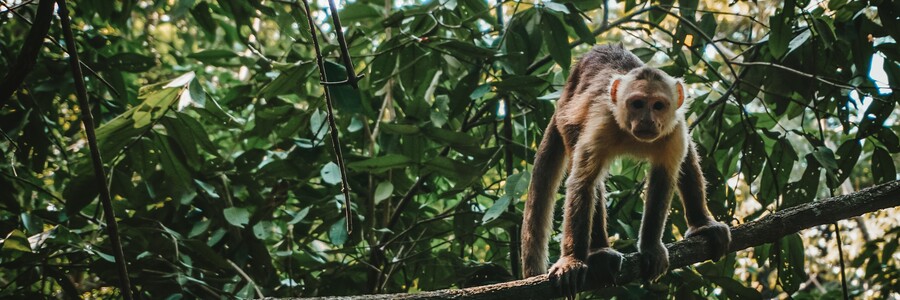Increasing droughts in the future
The Amazon Basin is home to the world's largest contiguous tropical rainforest, which currently still stores about 200 gigatonnes of carbon over the long term. But this rainforest is in danger, because in recent years severe droughts have occurred repeatedly in more than half of the Amazon region, damaging numerous trees, causing fires to break out and temporarily causing a net emission of carbon. And the intervals between these extreme droughts are getting shorter: for example, in 2005 and 2010 there were droughts that were each classified as "droughts of the century" when they occurred. This was followed by an even more severe drought in 2015 and 2016.
According to scientific calculations, such exceptionally dry years as 2005 and 2010 could already occur every two years in the Amazon region from 2025 and become the new normal from 2050. Thus, according to forecasts from 2050 to 2060, a hundred-year drought is predicted in up to nine out of ten years. According to scientists at the Potsdam Institute for Climate Impact Research, this is likely to have serious consequences: Whole swathes of land could be transformed into savannah or even completely treeless landscapes. The consequences for biodiversity would be catastrophic - as well as for the local, regional and global climate.
Deforestation partly responsible for developments
The temperature in the Amazon region has risen by an average of 0.5 degrees Celsius since 1980. Because climate change is bringing more frequent and more severe droughts to the Amazon basin, the rainforest could lose some of its rainfall and thus be even more affected by drought. In a healthy ecosystem, plants absorb most of the precipitation through their roots and release a large part of it back into the atmosphere through transpiration and evaporation via their leaves. The resulting water vapour creates new precipitation directly on site or in nearby areas, where the rainwater then evaporates again and leads to new precipitation.
The entire forest is interconnected in this circulation system. Consequently, damage in one region spreads to neighbouring regions. According to current research results from the Potsdam Institute for Climate Impact Research, for every third tree that dries out in the Amazon rainforest, a fourth tree dies - even if it is not directly affected by drought. When droughts occur, only a small amount of precipitation is stored by the vegetation, evaporation and humidity are reduced and less water vapour is transported. The lack of rain during droughts also greatly reduces the water recycling volume, which means that there is also less precipitation in neighbouring regions. Thus, more and more parts of the forest come under considerable stress. Drought-triggered forest dieback in the northern part of the Amazon can thus lead to further dieback reactions further south or west. The problem: The natural water cycle between the atmosphere and the rainforest accounts for up to 50 percent of the rain in the Amazon.
The situation is further exacerbated by human-induced deforestation and slash-and-burn clearing of the Amazon forest: currently most at risk of drought and the associated desertification are the southeastern and southwestern fringes of the Amazon rainforest, where human activities such as logging, deforestation and grazing have already been putting the forest ecosystem under pressure for years and exacerbating the problems. Because, according to the scientists, the same applies to deforestation: When one hectare of forest is cut down, 1.3 hectares are actually destroyed.
Diverse forests can stop downward spiral
In a study, a team from the Technical University of Munich (TUM), the Potsdam Institute for Climate Impact Research and the Stockholm Resilience Centre recommends protecting and restoring diversity in the Amazon at all costs because it maintains the resilience of the ecosystem. Since each species reacts differently to stresses, biodiversity acts as a buffer and can improve the resilience of the ecosystem and limit a domino effect of forest dieback. This insight is also important for the management of rainforest areas: Agricultural land in the form of monocultures is not diverse, not resilient and cannot replace the functions of the primary rainforest. Alternatively, agroforestry systems can be used that both bring biodiversity to agricultural land and simultaneously reforest diversely.
Discover reforestation projects and preserve rainforest here

